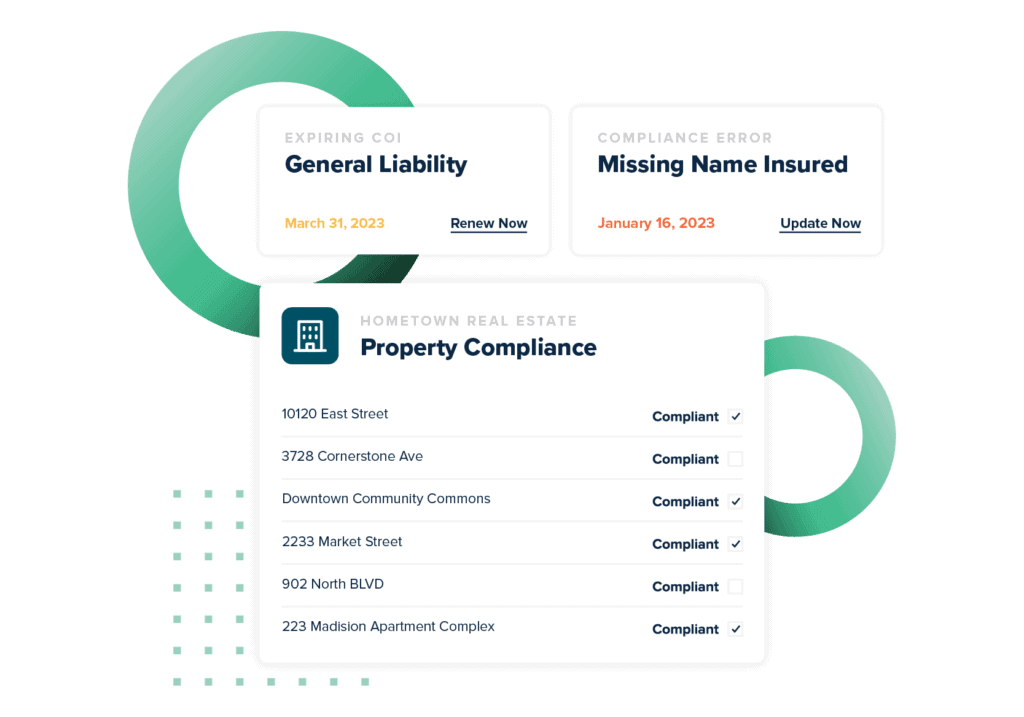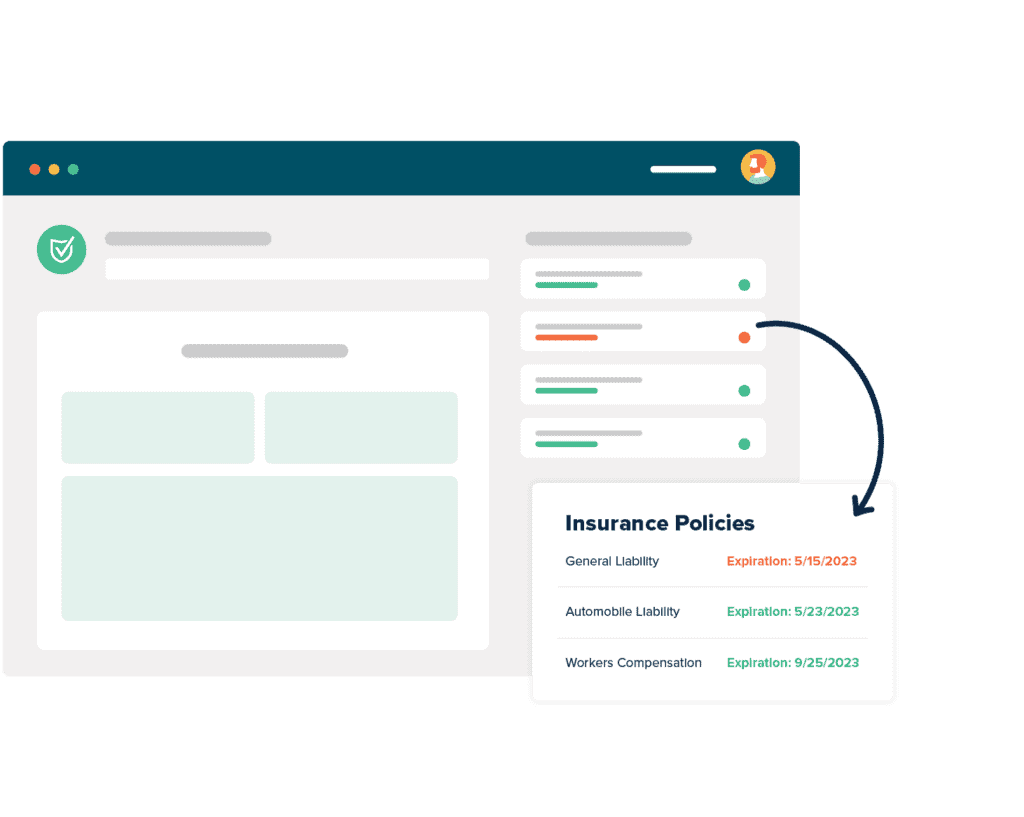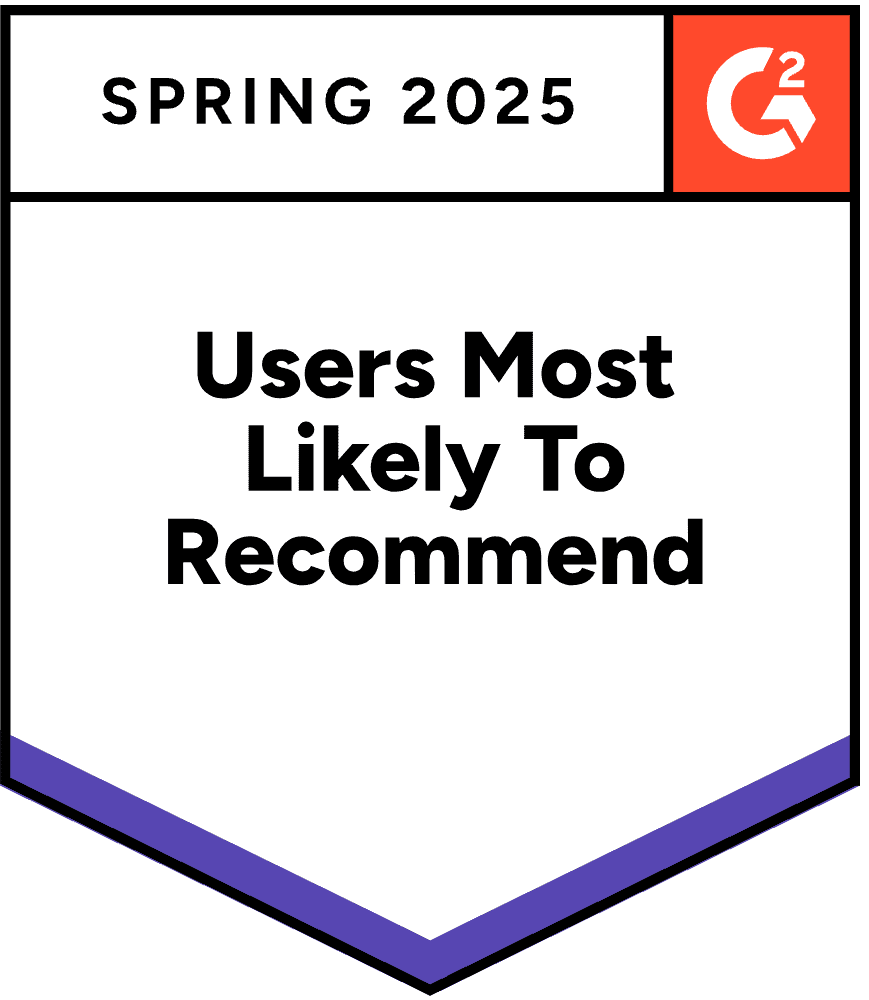Best Certificate of Insurance Tracking Software

Protect Your Business From Costly Claims
Ask your CFO or Risk Manager just how much claims and lawsuits can cost your business. If you are collecting certificates just to confirm they were received, you have no guarantee that your requirements are being met. myCOI Central is built on a foundation of insurance industry logic to ensure you remain protected with the appropriate coverage.
Automate Your COI Tracking
There’s no more need to worry about stacks of certificates cluttering up your office or hours of frustrating phone calls and emails to chase down certificates. myCOI Central provides your company with a solution to automate your insurance certificate requests, collection, and compliance resolution, while also giving your team a single, centralized repository to view compliance.


For Agents & Brokers
Win business and boost retention by providing agency branded, industry leading insurance tracking software to your insureds. Offer software only or add on your own compliance review services.
What Are The Benefits of COI Software?
View all CasesCertificate of Insurance Compliance Software
When you’re a company that works with hundreds or even thousands of contractors, vendors, or other third parties, an insurance compliance platform or other COI tracking solution is almost a necessity. Most companies find that general insurance software just doesn’t cut it when it comes to certificates of insurance. It’s not that those software solutions are bad solutions, it’s just that tracking, managing, and verifying COIs is not what they’re built for.
The requirements for a successful COI tracking and compliance are probably what you’d expect: it must be able to accept a large number of certificates of insurance in a repeatable way. It must be able to recognize the values on those COIs and compare them to the standards your company insists upon for its third parties. It must offer a scalable method of helping you verify the coverage listed on the certificates. And the best solutions do a lot more than that.
A good solution should also be able to cut down the time you spend on mundane tasks. You probably know how to organize certificates of insurance, or how to request a certificate of insurance from a vendor. Those are basic tasks, to be sure, but even those hours add up. And if your business is like ours, every hour is precious.
At myCOI our combination of software and insurance experts is unbeatable. Our technology can process your COIs, and our team can help you make sure your compliance rating is as high as it can be. Add in our quarterly verification of policy details, and your risk management team will get so much time back to invest in your business you won’t be able to believe it.
And if you’re just starting out, and want to see a certificate of insurance explained, let’s get into more detail below.
Insurance Certificate Issuance Software
Insurance certificate issuance software is not something non-insurance companies typically have to worry about. The insurance agent or broker is responsible for issuing certificates of insurance to the company. If you’re an owner or manager, it’s crucial that you know what your responsibilities are and how those differ from someone in this role at another firm. Whether it comes down to handling employee-related matters or discussing business strategy with clients, a basic understanding of these roles will go a long way when forging relationships within your industry.
Sometimes people mention certificates of issuance, but that’s a different certificate. These testify to the issuance of certificates for things like bar codes or identification numbers. As they sound, they are a certificate of issuance meaning they’re certifying that something was issued.
Instead of wasting time asking “what is certificate of issuance,” focus on tracking your own certificates of insurance. With a COI tracking application, you’ll never need to worry about tedious paperwork again. You can also make sure that your records are always up-to-date thanks to automated updates from vendors.
Insurance Certificate Management
Certainly the phrase “insurance certificate management” is a loaded term. There are so many angles to come from that any list of certificates of insurance best practices that aims to be complete is almost sure to miss the mark. We can make an attempt, though, from our experience, but you need to be reminded at the outset that best practice can, and should be, modified to suit your company’s specific needs.
Quite often, it’s a lot more complicated than just having a sample letter requesting certificate of insurance from vendors ready to use.
First, certificates of insurance should be created by insurance agents and brokers. The ease with which anyone can download fillable PDFs of certificates now means that the potential for COI fraud from third parties has never been higher, which makes keeping your verified compliance rating high is more critical than ever.
Certificate of insurance management, and knowing how to track certificates of insurance, are skills and tasks best suited to a risk management team, or sometimes a small group or person in the counsel’s legal department. There’s a lot involved in this kind of tracking, as we’ll cover below, and the distance between the work that needs to be done, and the amount of time and headcount often assigned to do it is what makes COI tracking solutions like myCOI so critical.
Certificate Of Insurance Compliance
Certificate of insurance compliance is the work a risk manager or compliance admin does to collect, verify and maintain the certificates of insurance provided to that company by its third parties. Almost anyone a business hires to do work on its behalf can be asked to provide some form of proof of insurance. And on the face of it, that sounds like a pretty easy ask.
Collect a piece of paper? A standardized form? And store it? Easy-peasy.
Except that’s just the easy part. Each certificate of insurance has to be checked, first and foremost to ensure that it claims all the necessary coverages, amounts, limits, and exclusions that your company requires of its contractors. Sure, there is general liability insurance mentioned, but does it protect to the same amount that you require? And has it taken into account that certificate of insurance requirements by state can be wildly detailed?
Also, what assurances do you have that the contractor didn’t let the policy lapse the day after they handed you the COI? Are you verifying with insurance agents that these contractors still hold the policies and protections that their COI claims? Are there exclusions to the contractor’s protection that will mean you’re held responsible for risk that should properly rest with the contractor? It’s so easy to find certificates of insurance online now that the risk of fraud increases each year. When someone needs certificates now, the internet is right there.
A certificate tracking tool like myCOI handles a lot of this for you.
How To Track Certificates Of Insurance
Even though you can use a COI tracking spreadsheet, there is a better method. Certificate tracking usually refers to a process that a company uses after it receives its COIs. The common processes range from by hand, from a file box, to full-fledged software and service solutions like myCOI.
You might be wondering how long to keep certificates of insurance, and the suggested retention period is approximately five years; however, every business and state has slightly different requirements. Therefore, it is vital to take a look at the anti-indemnity statutes and state requirements in your respective state.
Even though manual tracking is how most companies start, a file cabinet or spreadsheet can get old very quickly. As your business grows, you will acquire more COIs that are going to make tracking them by hand nearly impossible. Therefore, you may start a project without the required protection. Instead, you should be using an automated solution, such as myCOI. That way, you have access to an expert insurance team to keep track of your certificates for you. You will know exactly what insurance coverage you have, what you need to verify, and what you require to start your next project.
Certificate of insurance tracking is a key component of strong risk management teams, and knowing how to track certificates of insurance is often the link between excellent and poor risk mitigation.
Certificate Of Insurance Tracking Template Excel
If you’re looking for a simple and manual way to track the certificates of insurance in your business, then trying to track insurance policies on Excel spreadsheets is an option worth considering. Many companies begin by having their staff track insurance policies on Excel spreadsheets. For basic certificate of insurance tracking spreadsheets are not a bad solution, but as a full-function insurance tracker Excel has limitations.
Many companies find spreadsheets a good training tool; for a certificate of insurance tracking template Excel has several basic templates that can be customized to what you need, but most companies scale past this very quickly.
The drawbacks of using an Excel insurance tracker are that it can be time-consuming to maintain and often require constant updating. What began as a simple project one person could track and easily snowball into a time-intensive process that’s impossible to scale as a company grows. Instead, companies might add more people and more spreadsheets, which leads to paperwork being lost or misplaced, which leads to increased chances for errors in the data.
That is exactly the worry that myCOI erases. Our systems are industry-leading. Our insurance professionals are top-notch. If you’re tracking hundreds of certificates of insurance, we’d love the chance to show you just how much time and effort we can save you.
Certificates Of Insurance For Subcontractors
If you’re a subcontractor, or you hire subcontractors and have to track the certificates of insurance you receive from them, you may see a few oddities. Depending on what state you’re working in, certificates of insurance for subcontractors may sometimes lack evidence of workers’ compensation coverage. This is because several states do not require workers’ compensation coverage for what are called sole proprietorships, where the individual worker is the only employee of their one-person company. If you’re unsure whether or not there should be a workers comp policy by statute, consult with your state’s workers compensation board.
Even in states where it is not legally required, however, many companies that hire subcontractors still require the coverage as a necessity for employment. In that case, a workers’ compensation certificate of insurance for subcontractors will show the minimum necessary coverage required by the hiring entity.
What’s fun about these one-person plans is that often they’re what are called ghost policies: they are workers’ compensation plans, but they have exclusions disallowing coverage for the single employee. They allow subcontractors to satisfy the requirement of needing workers’ compensation, but since they are excluded, the coverage only covers a ghost.
Or in reality, no one.
Otherwise, certificates of insurance for subcontractors are generally the same as any other. Contractor tracking is hugely important, especially to large construction or commercial real estate companies, because as we all know by now, the answer to “which vendors need a certificate of insurance?” is “all of them.”
Free COI Tracking Software
Running a business is expensive, and sometimes the last thing you want to add is another expense, even when you have a need. We can’t tell you how many times we’ve heard companies tell us that they were doing their best: they knew about insurance tracking software, but the budget was just too tight, so they did it with a certificate of insurance tracking spreadsheet or a free COI tracking software. For a while, they did okay.
But their compliance percentage slipped down a little every month, as their business grew and more and more certificates were received. Each of those certificates had to be tracked and verified. Each month, more certificates than the last.
At a certain point, the amount of unnecessary risk they were assuming got to be too much, and they had to look for a more professional solution. Sometimes it’s because their risk management team or general counsel audits and realizes the exposure. Sometimes a new hire discovers a distressing reality that had gone unnoticed.
Unfortunately, sometimes it’s because the company just had to pay a damaging claim that they should have been covered for.
Free COI tracking software is not inherently bad, and almost no one sets out to make bad software. But it takes a dedication to customer service, a mission to erase worry, and a team of insurance professionals like the one we’ve assembled at myCOI to strive for being the best certificate of insurance tracking software, all so we can help you make sure your company is doing all it needs to with its certificates of insurance. Interested in learning more? Request a free demo to see how myCOI can help you.









